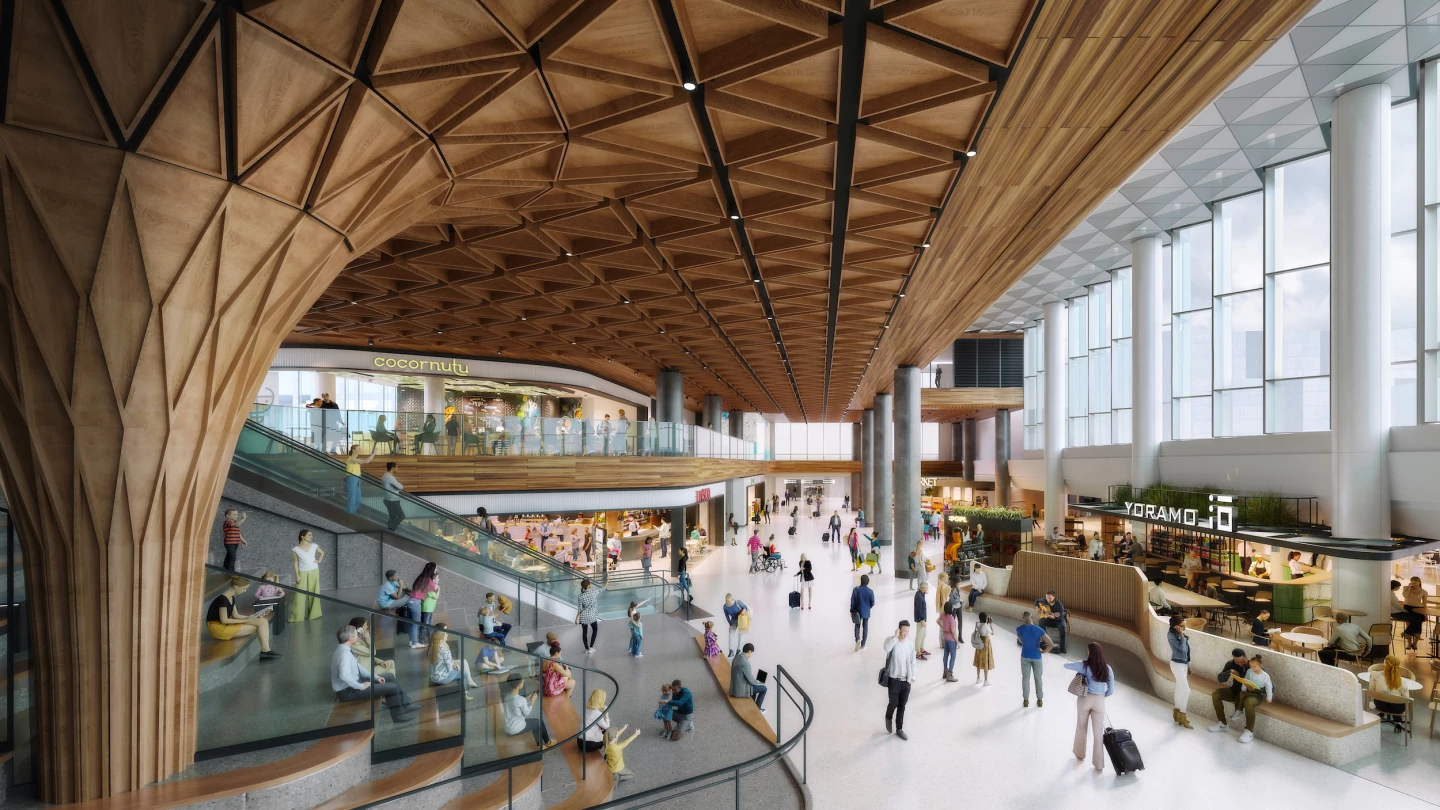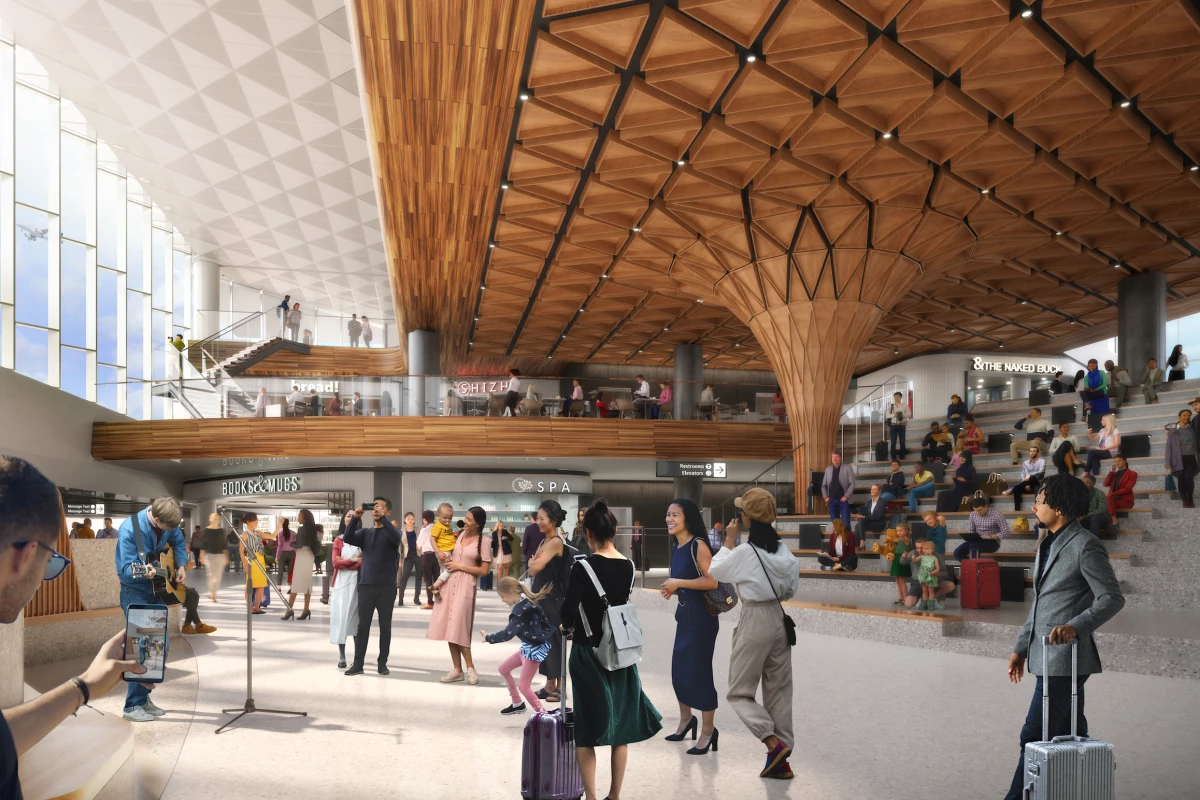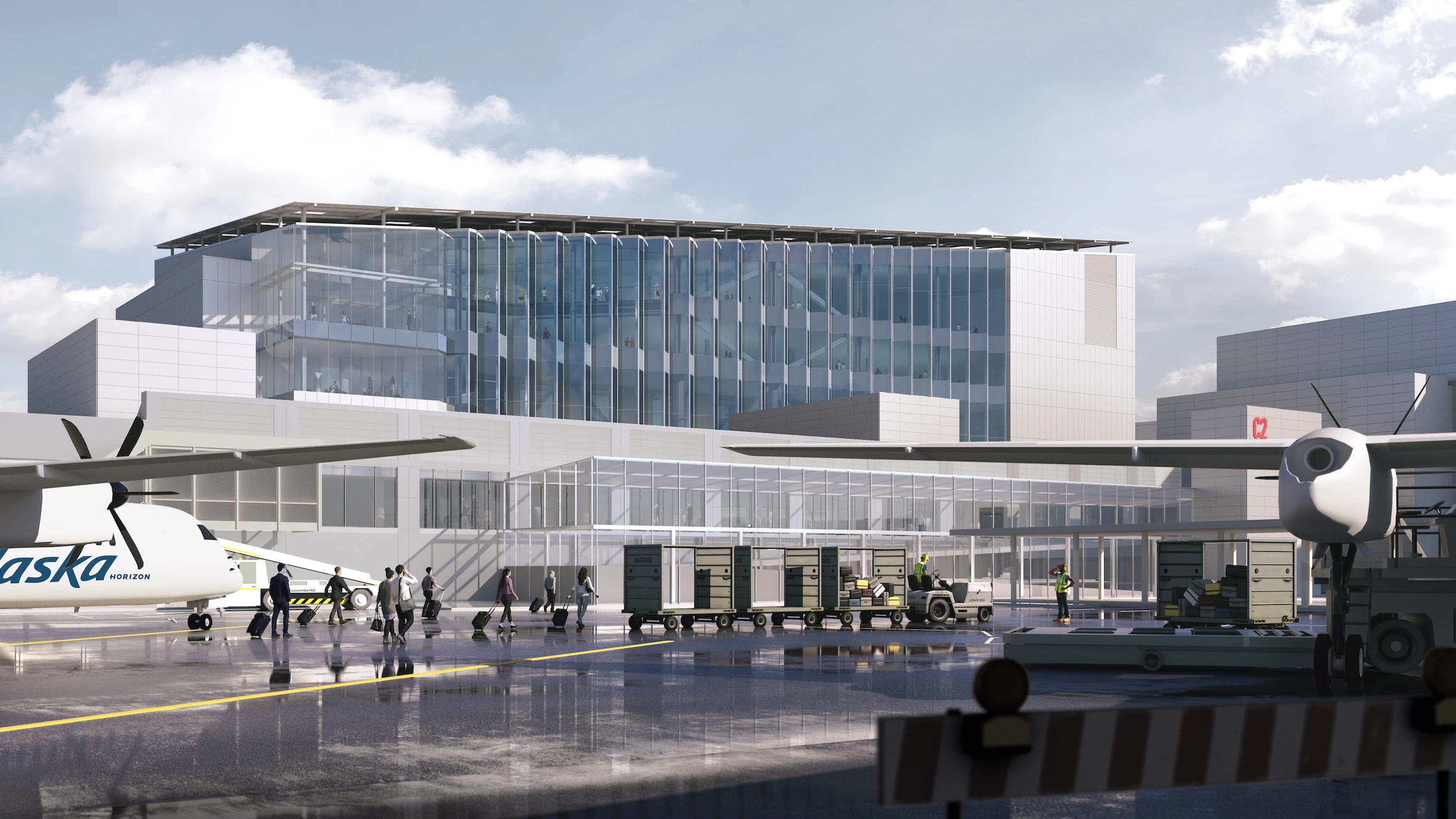Woods Bagot and the Miller Hull Partnership have revealed plans to expand the Seattle-Tacoma International Airport with a sustainably-designed new extension that will be defined by a stunning timber interior made from locally sourced Douglas fir wood.
The C Concourse Expansion has been designed with a lot of thought paid to ensuring weary travelers will be able to find their way around the airport easily. It will add 145,530 sq ft (roughly 13,500 sq m) of dining and retail space, a prayer and meditation area, and a new airline lounge. Its most notable feature though is its interior decor, which is inspired by the local area and will sculpt the Douglas fir into complex curves, creating an eye-catching ceiling, as well as a mezzanine level and multiple seating areas.
"Inspired by the Pacific Northwest, the concourse's interior is an interplay of environments that is defined by both the local energy and a connection to the natural landscape," explained Woods Bagot. "The more active public spaces are designed to reflect the textures and activities of the famous markets in Seattle and the region. A marketplace sits at the center of the concourse with a bar and retail kiosks that frame an open seating area that is also defined by a busker stage for local musicians. This stage faces the Grand Stairs, which provides an activated connection to the restaurants at the mezzanine level."

The C Concourse Expansion will be owned and operated by the Port of Seattle, which aims to be the greenest port in North America. With this in mind, planned sustainable design features include a roof-based solar array to reduce its draw on the grid by 15 percent, plus a focus on maximizing natural light and reducing solar heat gain with smart glass-based glazing. Energy efficient heating and cooling systems will be used to maintain a comfortable temperature and water usage will be reduced where possible.
The C Concourse Expansion is expected to begin construction in mid-2023 and will be completed in 2027. Its budget currently sits at US$340 million, with a maximum of $500 million.
Sources: Wood Bagot, Miller Hull Partnership, Port of Seattle






